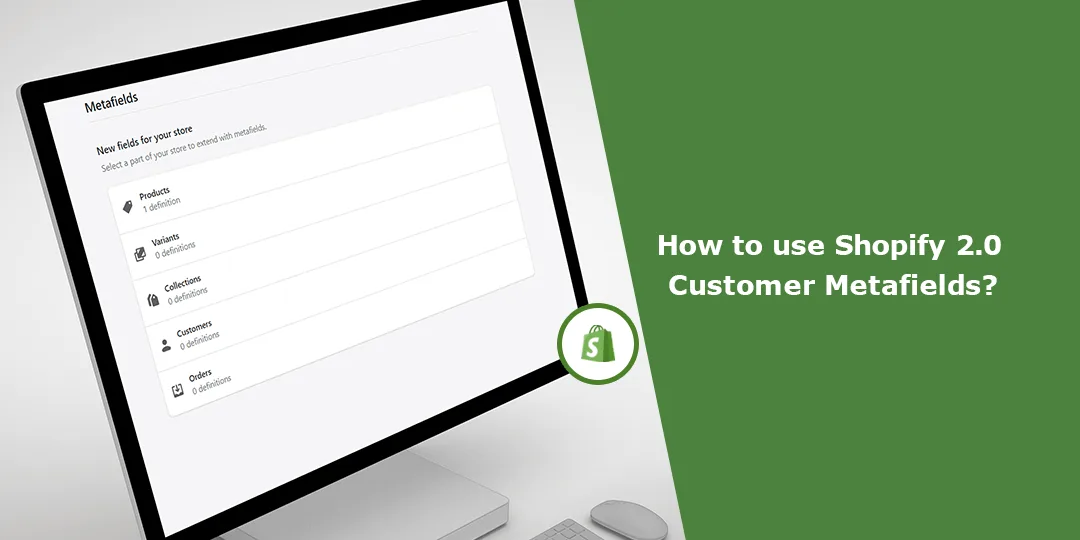Shopify 2.0 brought a host of exciting updates and features to the platform, and one of the most powerful additions is the ability to use customer metafields. Customer metafields allow you to store and manage custom information about your customers, providing you with valuable insights and enabling personalized experiences. In this blog post, we’ll walk you through how to use Shopify 2.0 customer metafields effectively.
What Are Customer Metafields?
Customer metafields are customizable fields that you can attach to customer profiles in your Shopify store. These fields can store additional information about your customers beyond the default data provided by Shopify. You can think of them as custom tags or attributes that help you better understand your customers and tailor your marketing and sales efforts accordingly.
Why Use Customer Metafields?
Customer metafields open up a world of possibilities for your online store. Here are some reasons why you might want to use them:
- Personalization: With customer metafields, you can collect and use information like birthdays, preferences, and purchase history to create highly personalized shopping experiences for your customers.
- Segmentation: You can use metafields to group customers based on specific criteria, such as location, product preferences, or membership status. This segmentation can be invaluable for targeted marketing campaigns.
- Improved Analytics: By storing additional customer data, you can gain deeper insights into customer behavior, allowing you to make data-driven decisions and optimize your store’s performance.
- Third-Party Integrations: Many third-party apps and services can utilize customer metafields, enhancing your store’s functionality and allowing for even more customization.
How to Create and Manage Customer Metafields in Shopify 2.0?
Step 1: Log in to your Shopify store and navigate to the admin dashboard.
Step 2: Click on Settings in the lower-left corner of your dashboard.

Step 3: In the Settings menu, select Custom data.
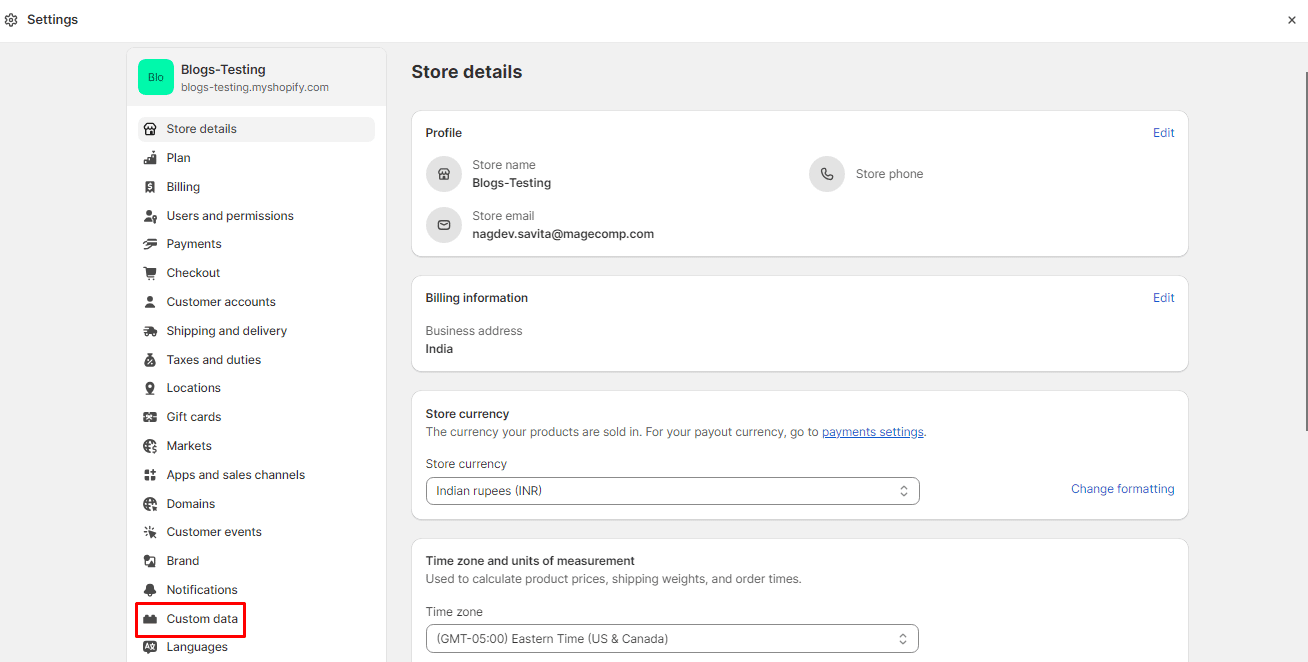
Step 4: Click on the Customers option.
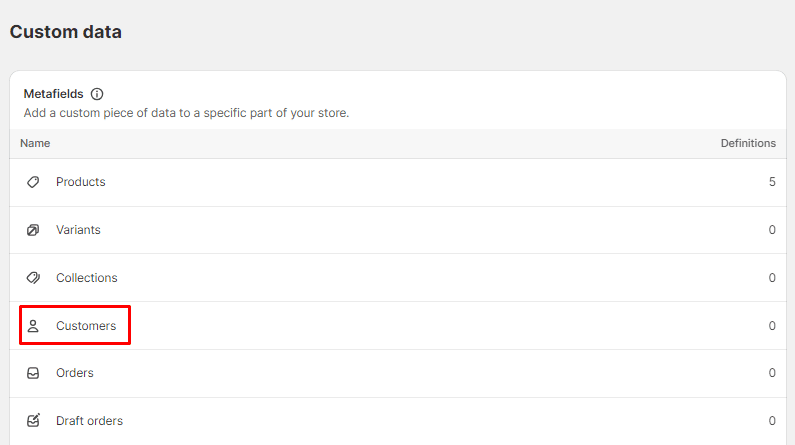
Step 5: Click on the Add definition button.
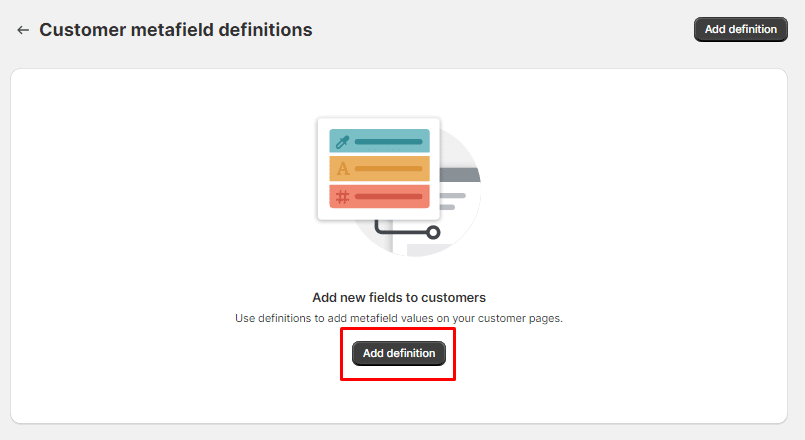
Step 6: Fill in the metafield details, including the namespace, key, data type, and description. Namespace and key should be unique identifiers for your metafield.
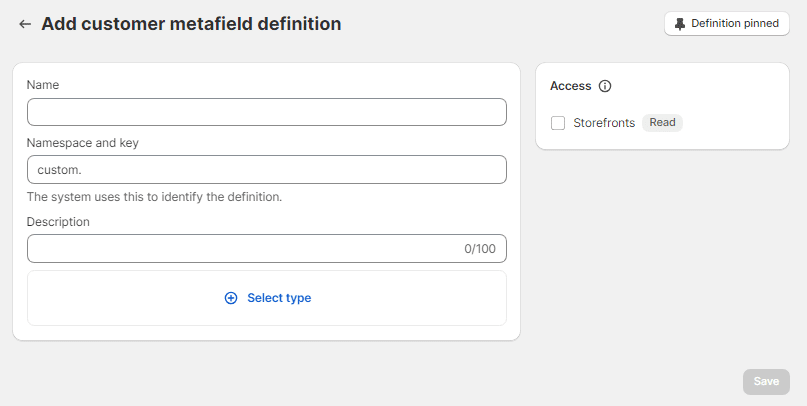
Step 7: After creating your metafields, you can apply them to individual customer profiles by navigating to the customer’s page and entering the relevant information in the newly created metafields.
Examples of Customer Metafields:
Here are some common use cases for customer metafields:
- Birthday: Store customers’ birthdates to send personalized birthday discounts or promotions.
- Product Preferences: Record customers’ preferred product categories or brands to tailor product recommendations.
- Membership Levels: Use metafields to indicate membership levels or loyalty program status.
- Location: Store customer locations for targeted marketing or to offer location-specific promotions.
- Order History: Keep track of a customer’s order history or purchase preferences.
Final Say:
Shopify 2.0’s customer metafields feature empowers merchants to collect and leverage custom data, enabling personalized experiences and improved customer segmentation. By understanding how to create and manage customer metafields effectively, you can unlock the full potential of your Shopify store, enhance customer satisfaction, and drive sales growth. Start utilizing customer metafields today and take your e-commerce business to the next level.
Learn about other metafields in Shopify – Shopify Metafields: Customize Your Shopify Store Like a Pro.
You can even connect with Experienced Shopify Developers to customize your store.


